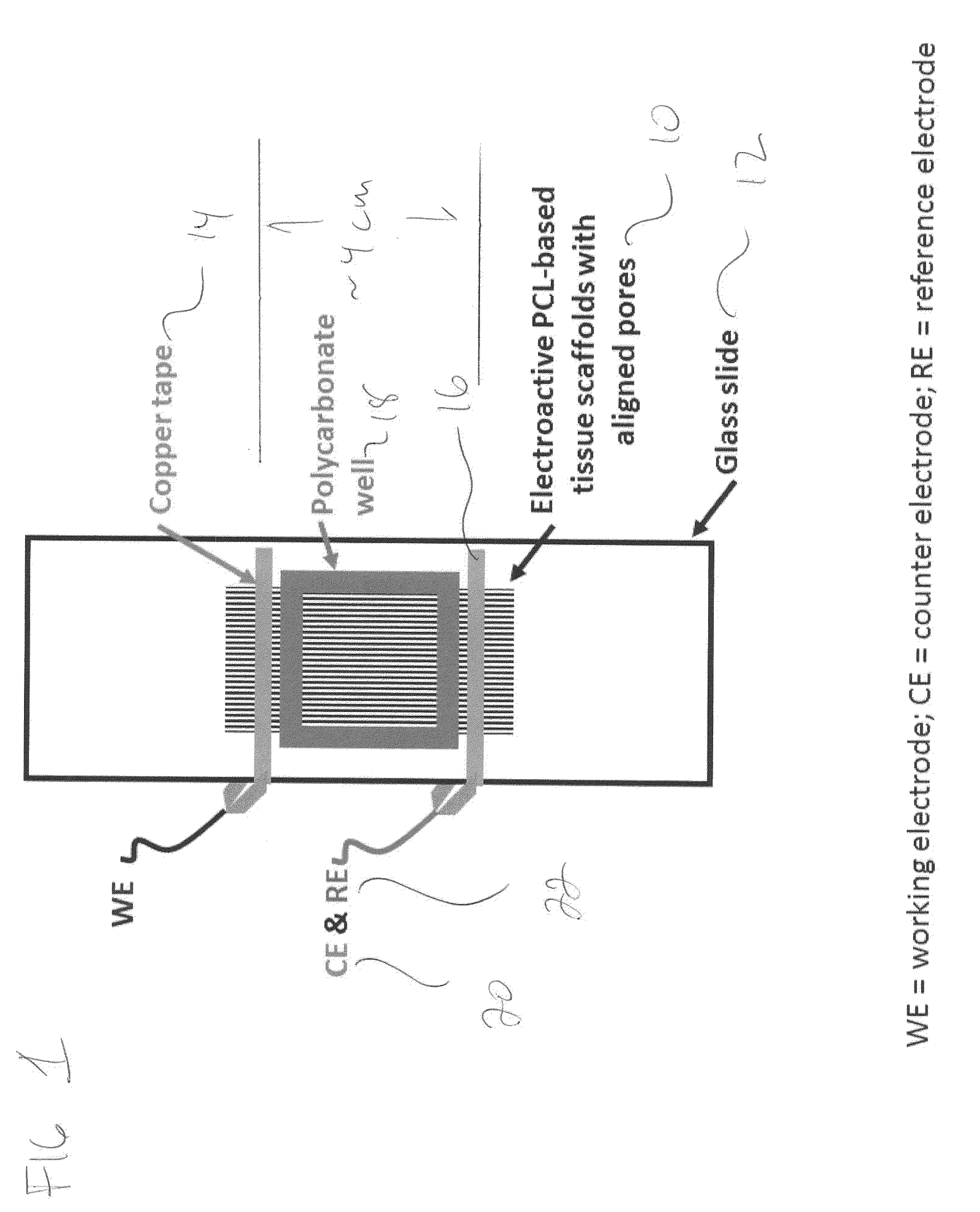Electroactive polymeric scaffolds and method for delivering nerve growth factor to nerve tissue
a technology of nerve tissue and electrical activity, applied in the field of electrical activity biomaterials, can solve the problems of loss of function and high cost of allografts
- Summary
- Abstract
- Description
- Claims
- Application Information
AI Technical Summary
Benefits of technology
Problems solved by technology
Method used
Image
Examples
Embodiment Construction
1. Production of Electroactive Polycaprolactone-Based Scaffolds
[0007]Initially, pyrrole was purified by passage over basic alumina. A polycaprolactone matrix with aligned pores was placed in a solution of the pyrrole (291 μL, [84 mM], 1 eq.) and polystyrenesulfonate (0.799 g, [84 mM], 1 eq., Mn 70 kDa) in a solvent of distilled water (50 mL). Samples were sonicated for five minutes and cooled to 4° C. for one hour. Thereafter, ferric chloride (1.848 g, [228 mM], 2.7 eq.) was added as an initiator, the mixture was shaken to assure dissolution of the ferric chloride, and the shaken mixture was then incubated for a further twenty four hours at 4° C. Electroactive scaffolds with an interpenetrating network of polypyrrole and polystyrenesulfonate) were removed from the reaction mixture, placed in fresh distilled water, sonicated for five minutes, and then exhaustively washed (to remove monomers, oligomers and initiators) with deionized water until the water was clear, colorless and the p...
PUM
 Login to View More
Login to View More Abstract
Description
Claims
Application Information
 Login to View More
Login to View More - R&D
- Intellectual Property
- Life Sciences
- Materials
- Tech Scout
- Unparalleled Data Quality
- Higher Quality Content
- 60% Fewer Hallucinations
Browse by: Latest US Patents, China's latest patents, Technical Efficacy Thesaurus, Application Domain, Technology Topic, Popular Technical Reports.
© 2025 PatSnap. All rights reserved.Legal|Privacy policy|Modern Slavery Act Transparency Statement|Sitemap|About US| Contact US: help@patsnap.com

